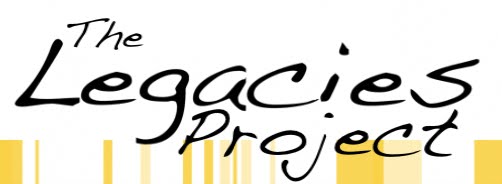We're launching this blog with the origin story of the Legacies Project. Parts one and two were about the transformational experience of hearing new and more meaningful stories from my Dad while he was dying.
Dad had a good death—he had hospice care, and died at home surrounded by family. Just a few years later his sister—my Aunt Marie—had a bad death, enduring an agonizing decline in a nursing home.
Now, in the years since Aunt Marie passed, I've learned a lot about elder care—it's a continuum ranging from assisted living to skilled nursing to long term care to blah blah blah... It's all true, but it's inside baseball. I think most people think what I remember thinking at the time—that there are two kinds of nursing homes: the nice ones that you probably had to be rich to get into, and the ones that scared the bejeezus out of you.
And it's not like people in the business don't get it. They know long term care environments push people's buttons. It's a place most people don't go unless they have to—when a relative goes there, or when you yourself are admitted. And a nursing home certainly throws your own mortality in your face. Big hitters in the industry understand the challenges better than anyone, such as eldercare visionary Dr. Bill Thomas, who has described the "three plagues" of nursing homes: boredom, helplessness and loneliness.
Those are exactly what I witnessed at Aunt Marie's facility.
I was living in Chicago at the time, and would visit whenever I was in town. On the way to her room, the hallway would be lined with women in wheelchairs, who would literally reach out, grab my arm and ask if I could just talk to them for five minutes. I'd always stop to chat. It sometimes took 40 minutes just to get to my aunt's room! The stories from the hallway were by turns, dramatic, hilarious, charming, harrowing, and, sure, sometimes boring. But I'll take a clunker or two as payment for all the good ones. And it was evident at the time (and supported by research later on) that there was great therapeutic value for the elders in having their stories heard.
Aunt Marie went into long term care when she had a stroke. She had lost her language capacity—she tried to speak, but what came out was unintelligible. Her mind was sharp, and it was incredibly frustrating to her. We looked at photo albums, and as she made noises instead of words, I wished I had heard more of her stories while she was still able to tell them. And I valued the stories I heard every visit on the way to her room.
It was another light bulb moment: clearly, nursing homes are where community elders are gathered; they're repositories of great stories and valuable first-person accounts of history. After talking to my Dad, I had wondered how to cast a wide net to gather narratives, both for simple efficiency, and to achieve the kind of content overlap that would make such an archive valuable to historians, researchers... and anyone who likes good stories. In nursing homes—and by extension wherever groups of elders are found... at community centers, churches, VFW Halls and the like—we have a treasure trove of stories already gathered in one place. Get an army of video cameras to the places where the elders are, and you've struck gold.
The next question was: Where to find an army to hold those video cameras? And that'll be our next entry.
Was anyone else ever scared to death on their first visits to a so-called "nursing home?" (I use that term less now that people in the elder care industry have educated me. And let me be clear: I have been in some AWESOME, caring, compassionate, friendly and upbeat long term care facilities since that first nervous experience.) As always, the comments section below is for your stories and feedback.
Thanks for sharing,
Jimmy Rhoades
Co-Founder
The Legacies Project
Wednesday, February 24, 2010
Subscribe to:
Post Comments (Atom)

No comments:
Post a Comment